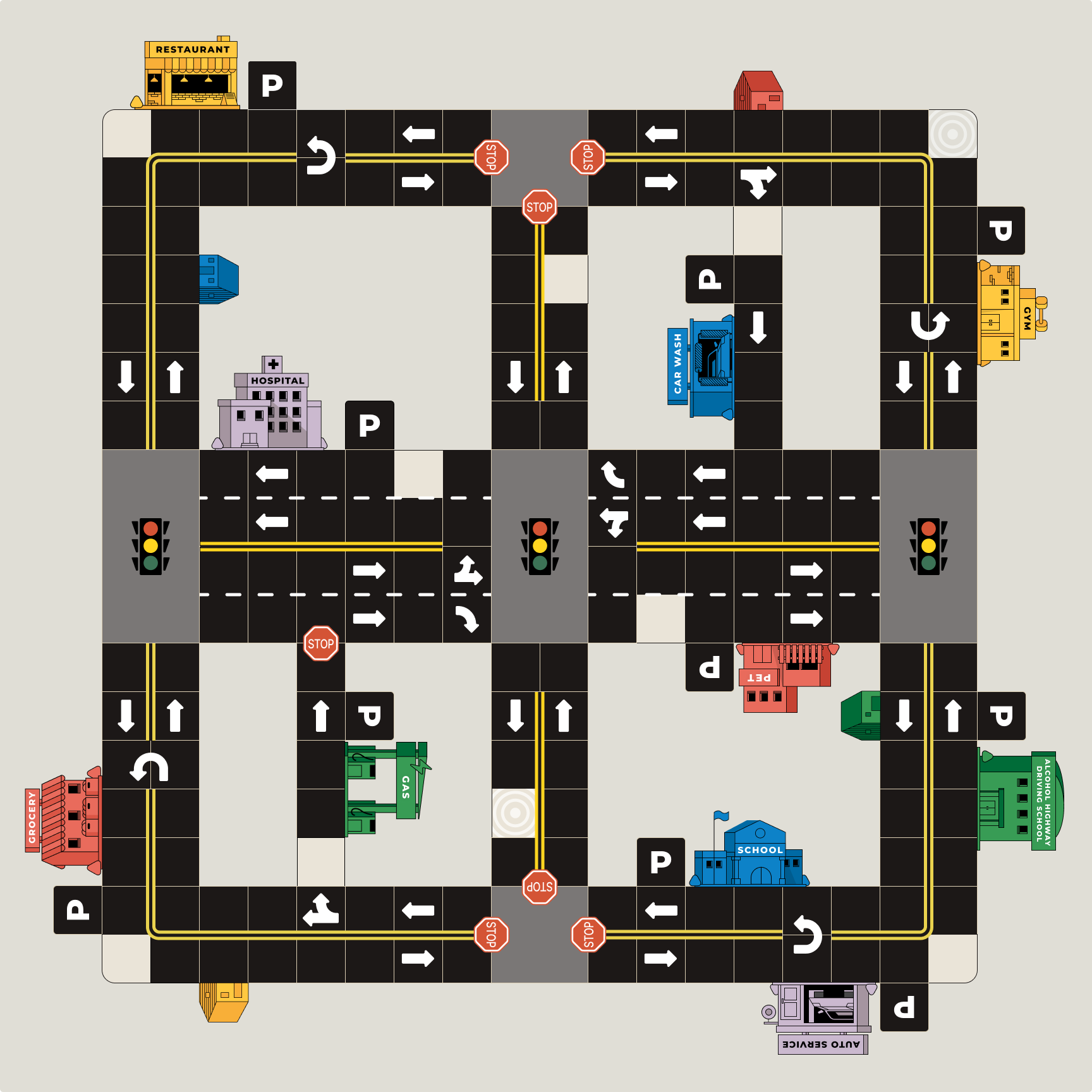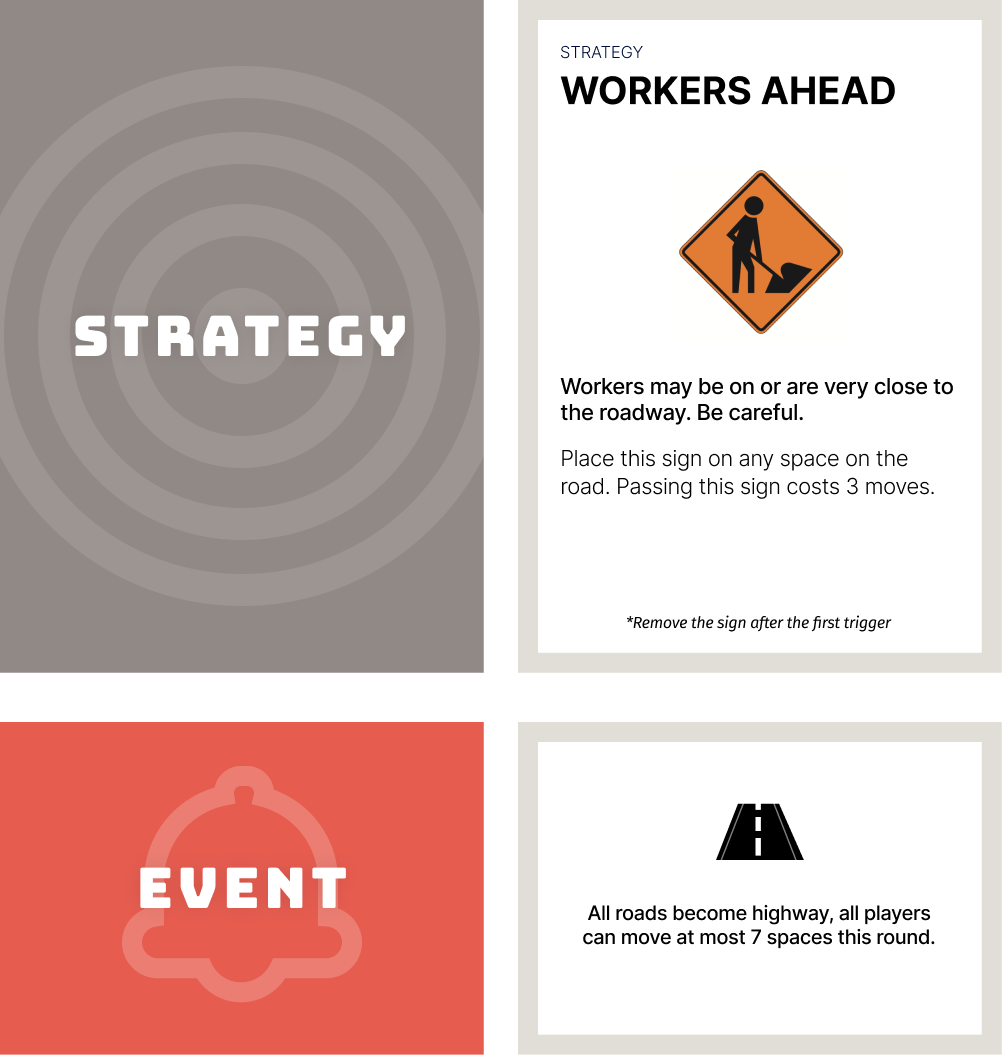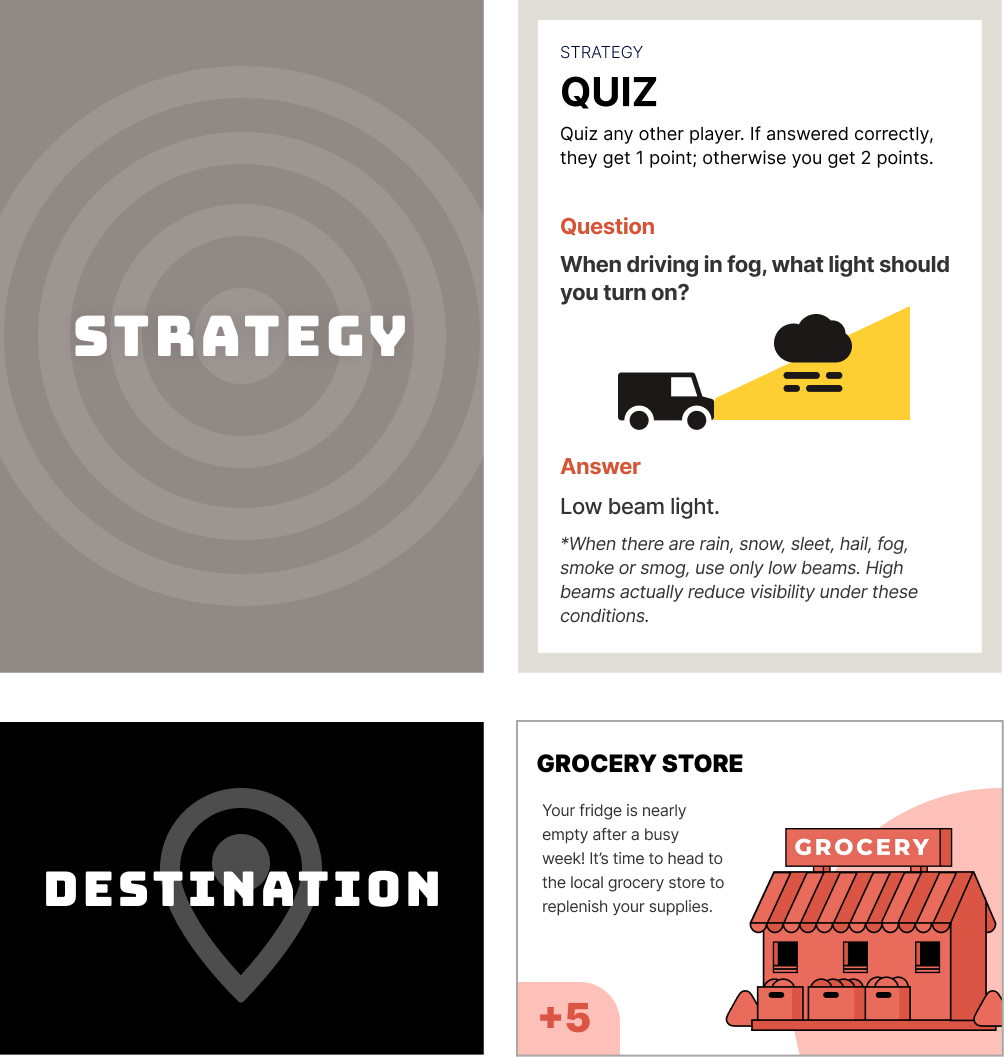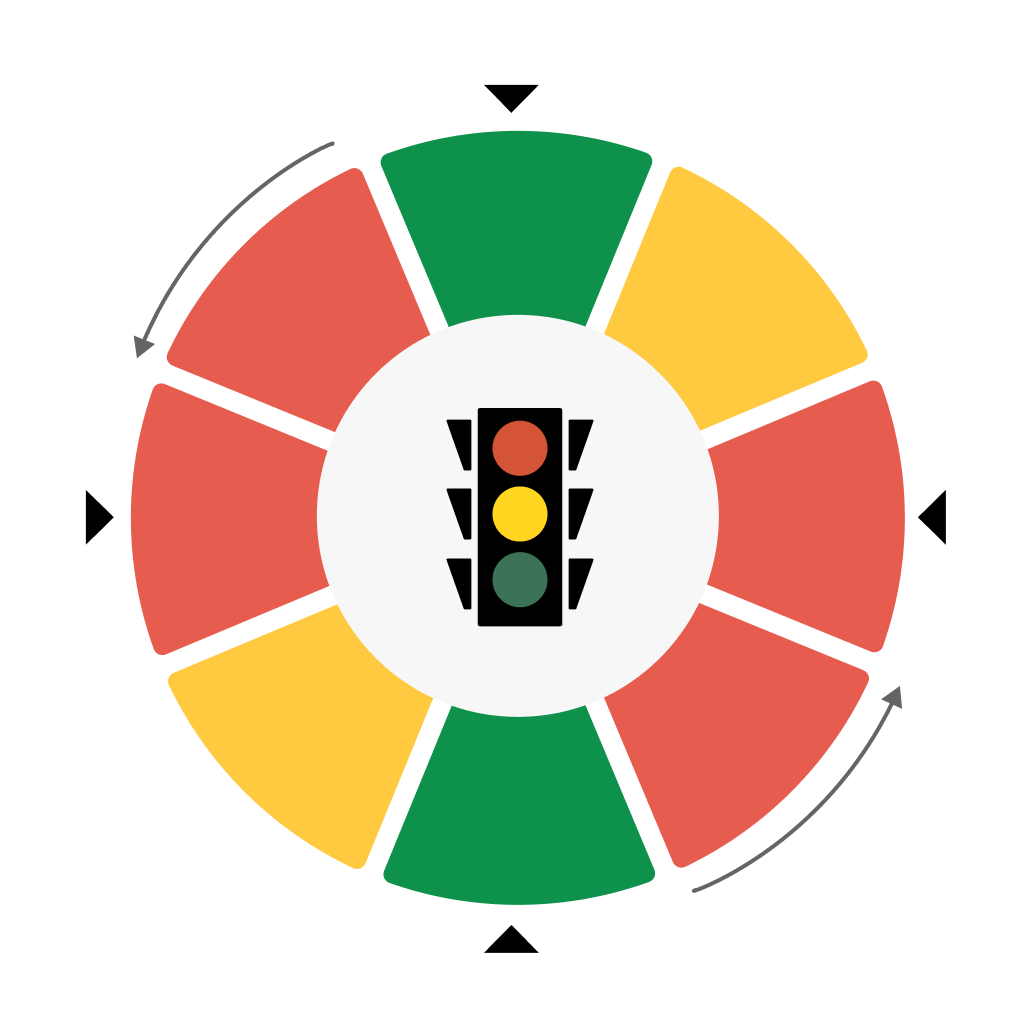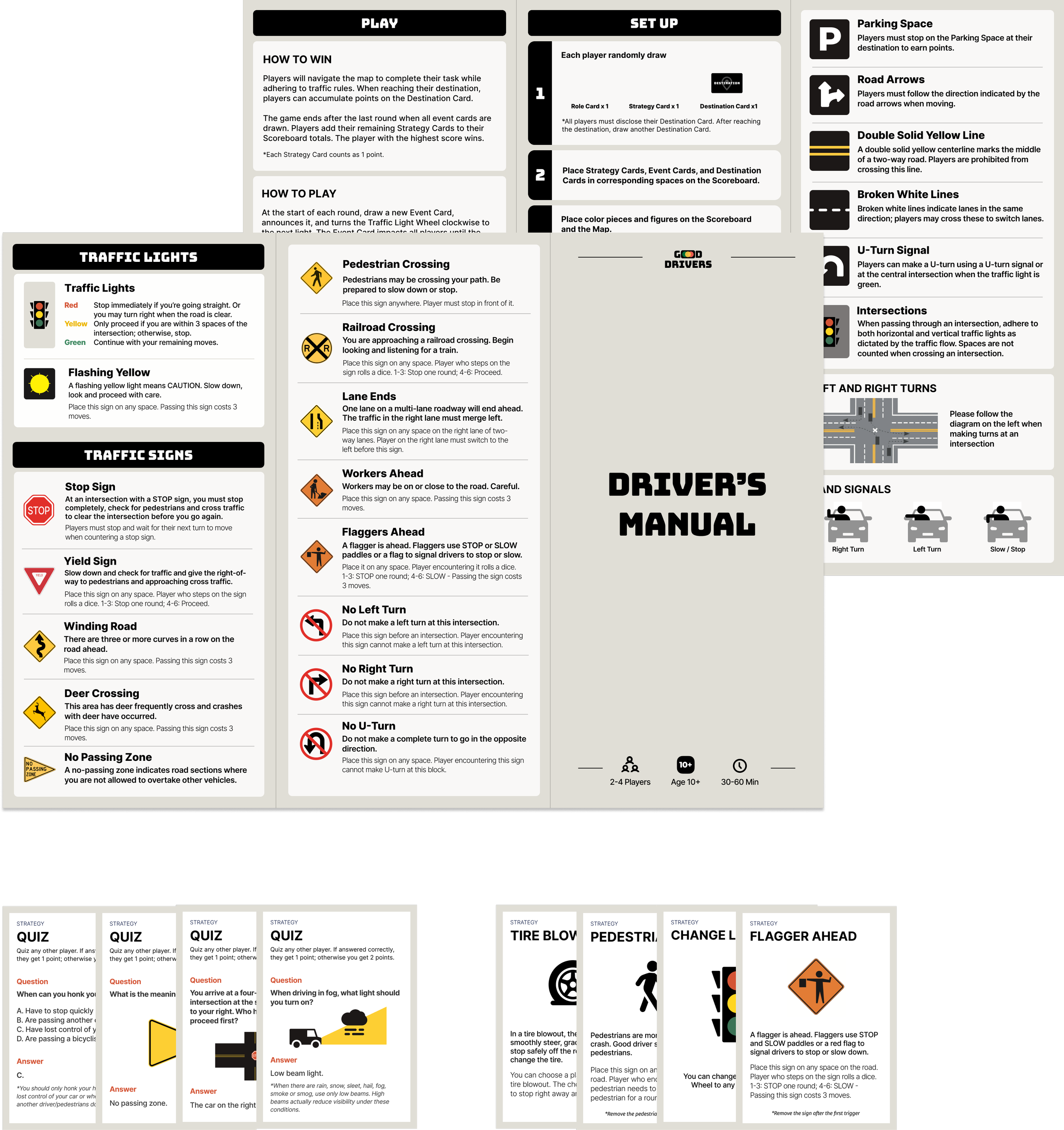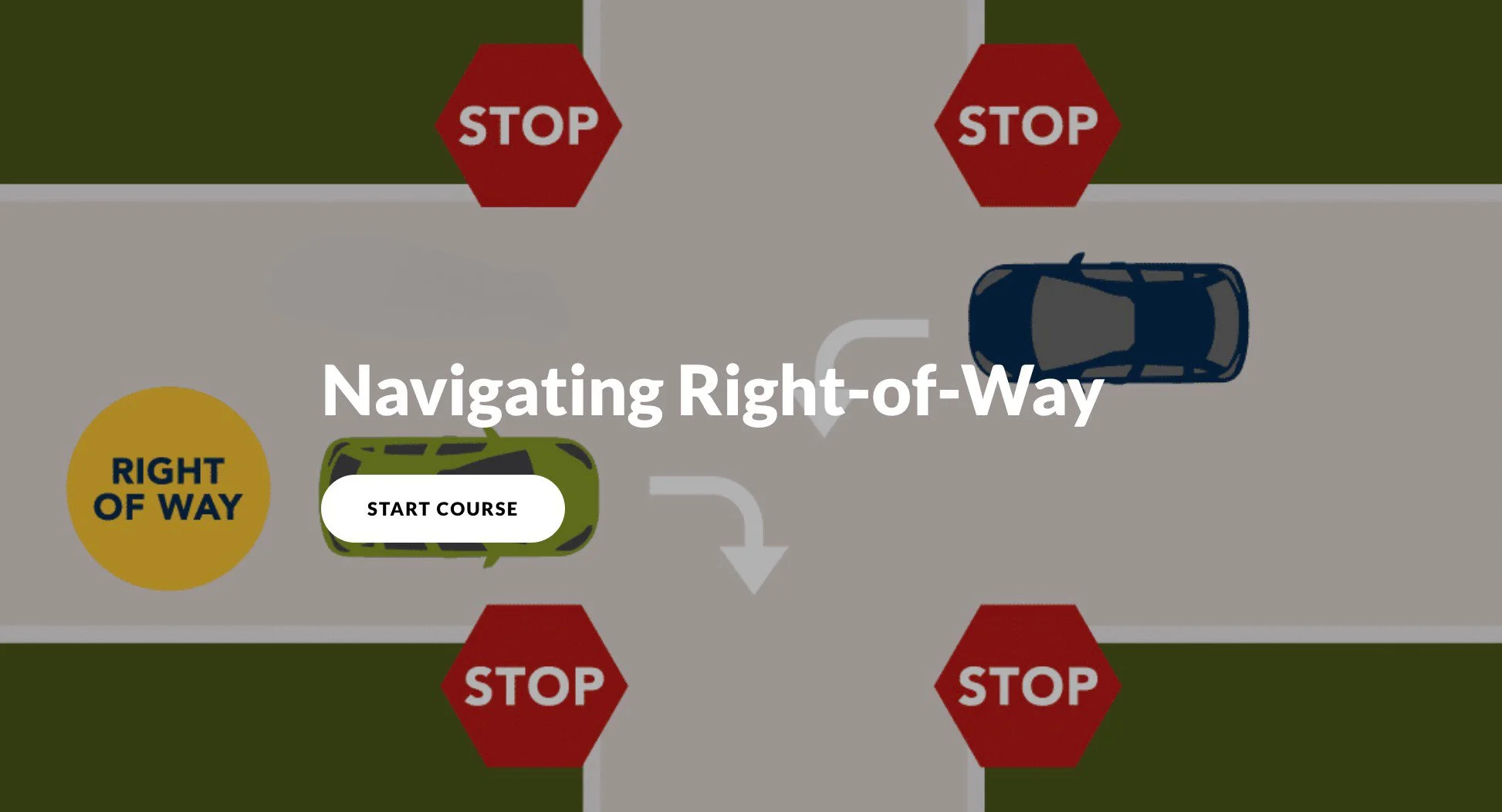The Educational Board Game — GoodDriver
2024
Pittsburgh
The game transforms traditional driving education into an interactive, scenario-based experience, making learning fun and collaborative through critical thinking and decision-making while simulating real-world driving challenges.
Overview
The board game: Good Driver is focused on C2 vehicle driving knowledge and is designed for individuals aged 10+ with limited driving experience or licensed drivers aiming to prepare for Pennsylvania's permit and road tests or enhance their driving skills. The game helps players master essential driving rules and principles, preparing them for driving tests and promoting safe driving habits.
Team
6 students
Roles
Duration
4 months
Instructional design
Prototyping
Playtesting
Evaluation
86%
demonstrated measurable improvement in their driving knowledge after the game
100%
Recommendation
Problem Statement
Traditional methods for preparing for Pennsylvania's driver's permit and road tests, like manuals and quizzes, often fail to engage learners. Survey result shows that novices struggle with guessing, sign recognition, and speed control, while experts tend to forget key knowledge and develop bad habits post-test. There is a need for a more engaging, interactive learning method to address these gaps.
Final Solution
Our game solves this by offering scenario-based learning that strengthens foundational knowledge for novices and refreshes critical skills for experienced drivers, making driving education more effective and enjoyable.
Our Method:
ADDIE Model
Analysis: Cognitive Task Analysis With Novices and experts
A CTA was conducted to identify specific questions on the driver's license test and determine more detailed learning objectives. The aim was to understand how individuals with varying levels of driving knowledge interact with authentic questions from the Pennsylvania Driving Knowledge Test.
Participants answered multiple-choice questions on topics such as traffic signals, speed limits, and driving situations. Utilizing a think-aloud method, participants verbalized their thought processes and reasoning as they answered the questions, providing insights into their decision-making and knowledge gaps.
Design: Initial Ideation & Gameloop
Our ideation process focused on creating an engaging game loop that begins with a simple starting mechanic to set player order. We then explored different roles to provide unique perspectives for each player, encouraging strategic decision-making based on their role and board dynamics.
To ensure constant engagement, we incorporated interactive elements like movement, events, and obstacles, balancing chance with strategy. The game’s structure is designed to maintain momentum through rounds, with clear win conditions driving progression and competition. This approach emphasizes player agency and an evolving, dynamic gameplay experience.
Development & Implementation: Prototype, Playtesting, and Iteration
Our prototype and playtest process began with reevaluating our learning objectives and aligning them with specific game elements to ensure effective knowledge transfer. We mapped objectives to relevant content in Figjam and transformed these concepts into actual game mechanics. Then we develop the game mechanics into a physical game prototype.
Iteration
After developing the first prototype, we conducted two internal playtests to assess gameplay and mechanics. Key insights highlighted the need for increased player autonomy and clearer instructions. Based on these findings, we iterated on the design, creating a new game loop for the second prototype. In the next round of playtesting, two new participant groups used the think-aloud method to share their thought processes and pinpoint areas of confusion. This feedback helped us simplify the mechanics and streamline the rules, refining the experience in The Driver’s Manual.
Key Learning Science Principles Integrated into Our Game
-
Players begin by acquainting themselves with gameplay mechanics and driving fundamentals via the Player's Manual, laying the groundwork for an immersive experience.
-
Players employ strategy cards to quiz each other on driving knowledge, integrating competition to reinforce learning.
-
Immediate feedback during quizzes corrects misunderstandings and reinforces correct responses, improving learning efficacy.
-
The game mirrors real-life driving scenarios, linking in-game decisions to real-world challenges to anchor and enhance the relevance of the learning experience.
Evaluation
The effectiveness of The Good Driver game was evaluated using pre- and post-test results based on 20 identical questions from the Pennsylvania Driver's License Test.
Participants' average scores increased from 14.17 in the pre-test to 18.67 in the post-test, reflecting an average learning gain of 4.5 points. Individual performance varied, with one participant achieving the highest improvement of 8 points.


